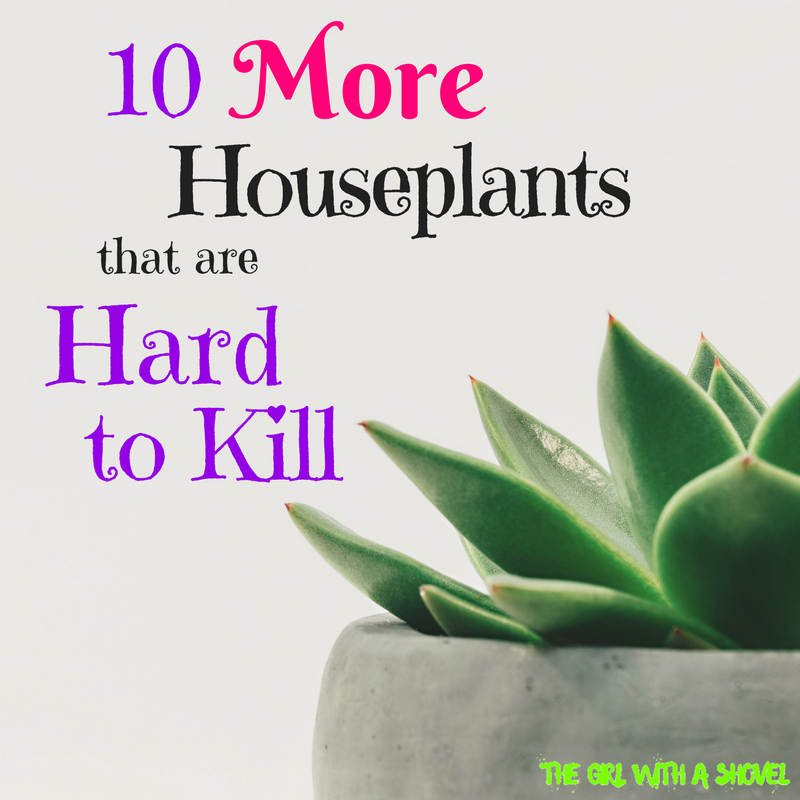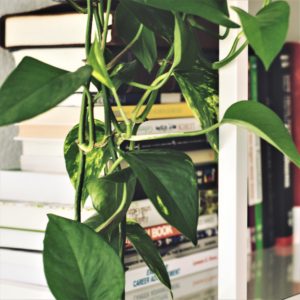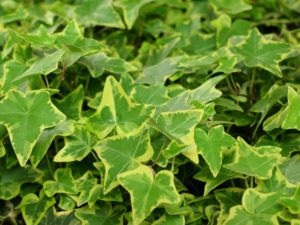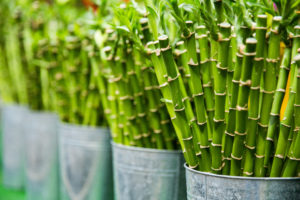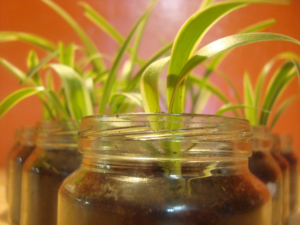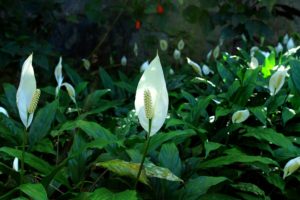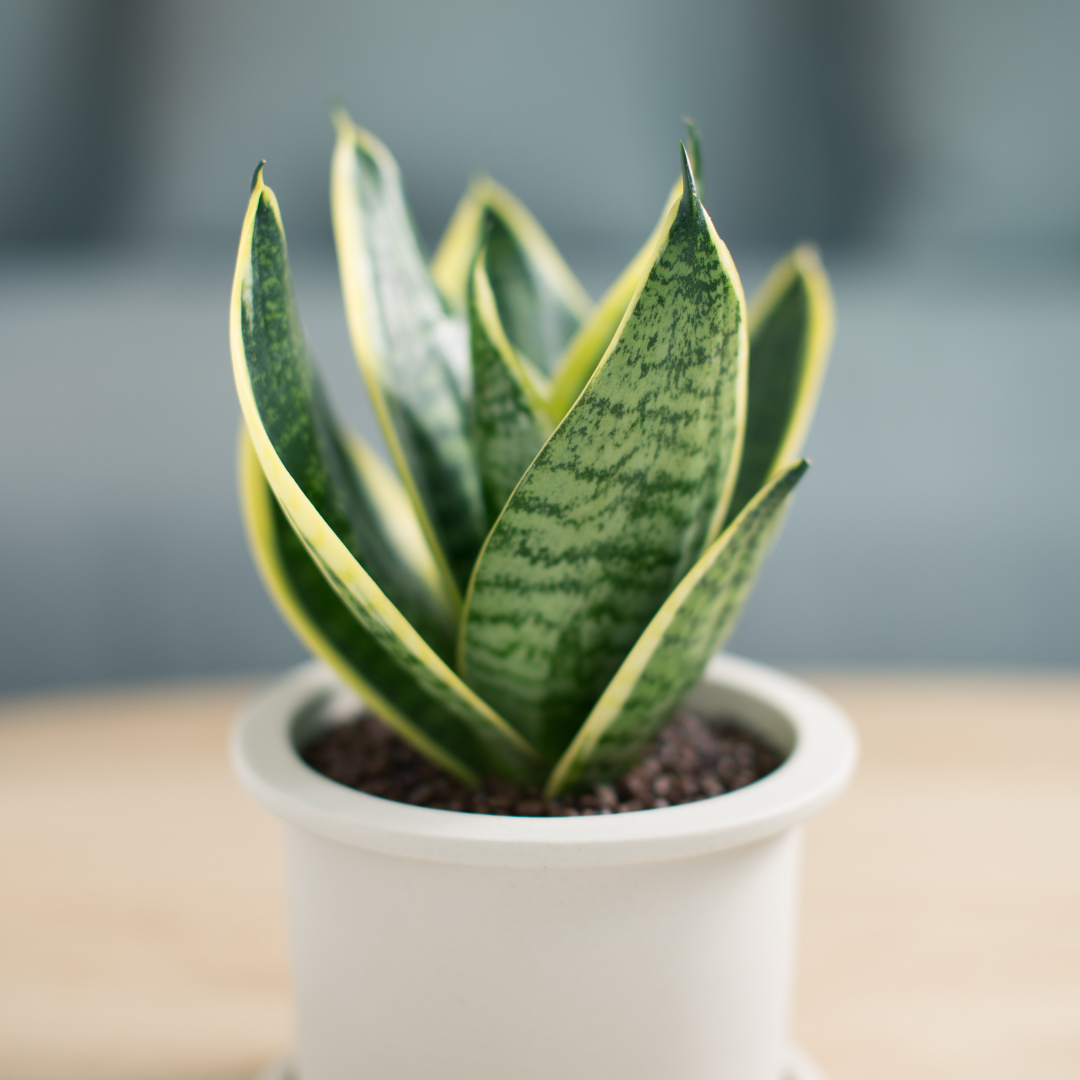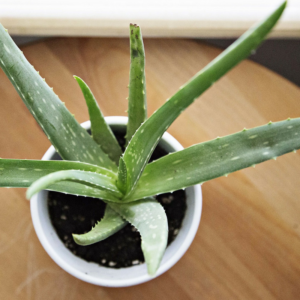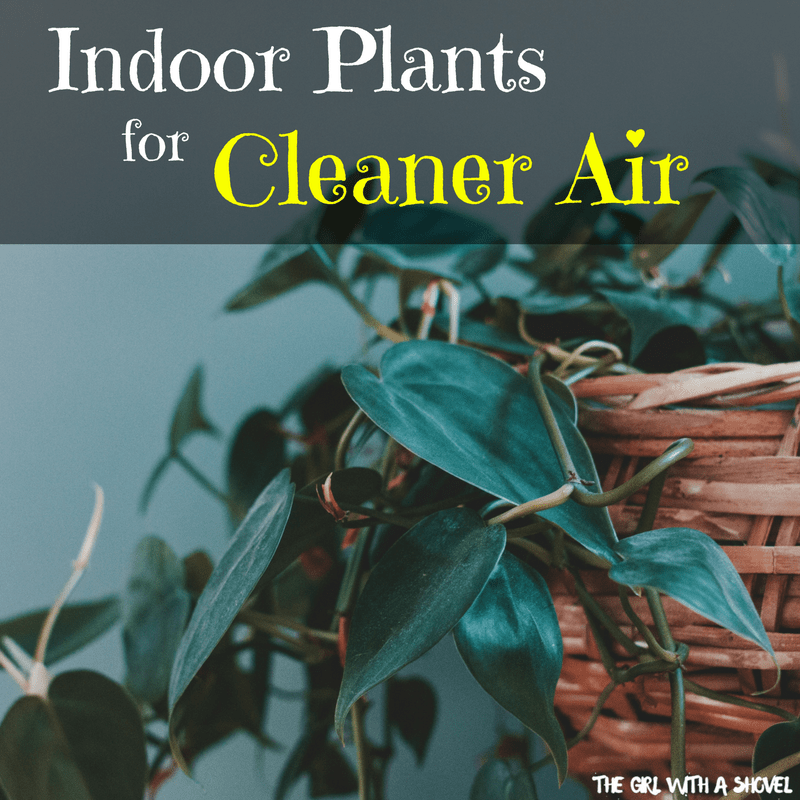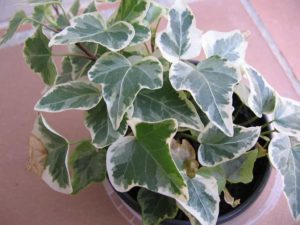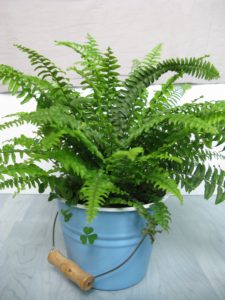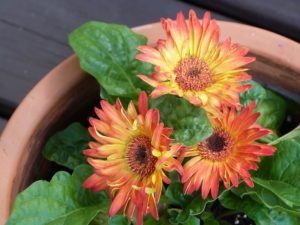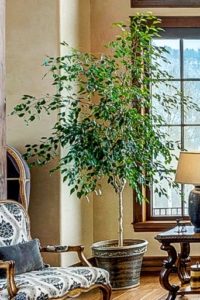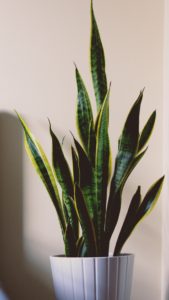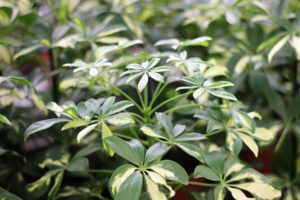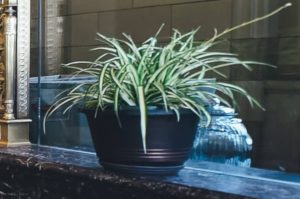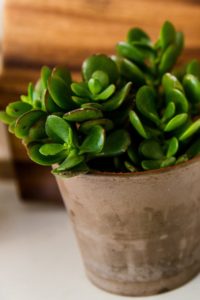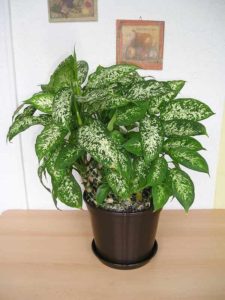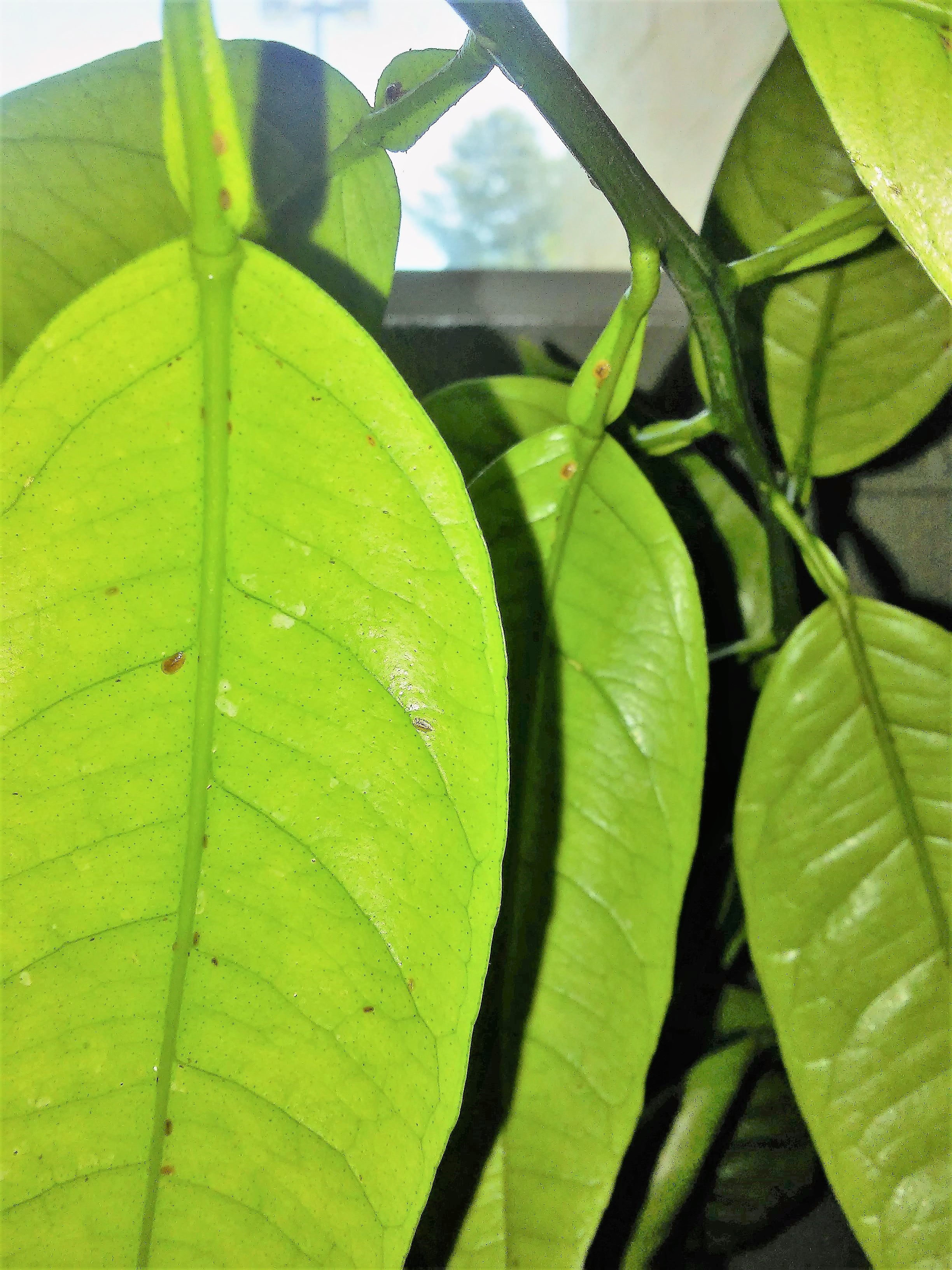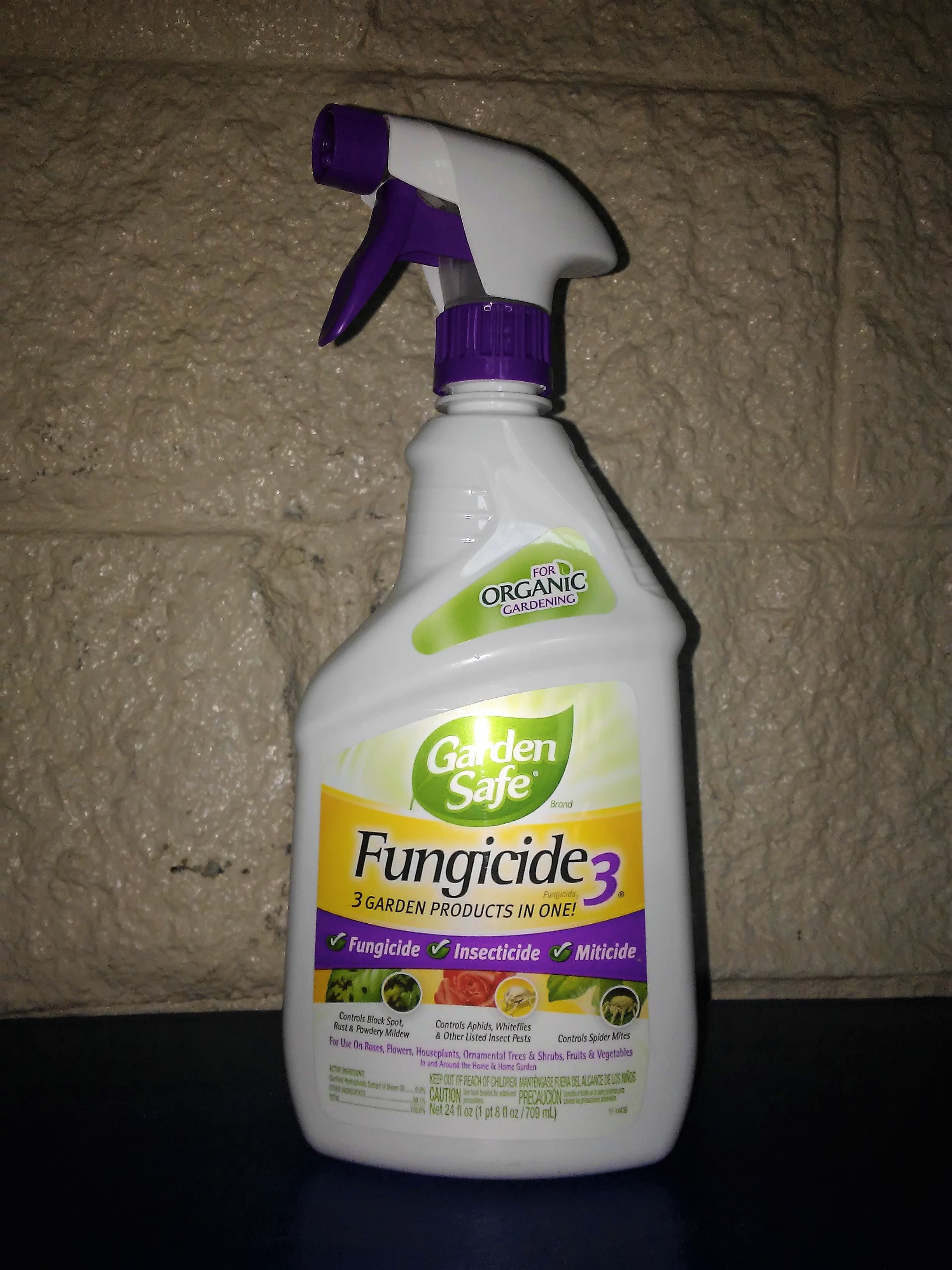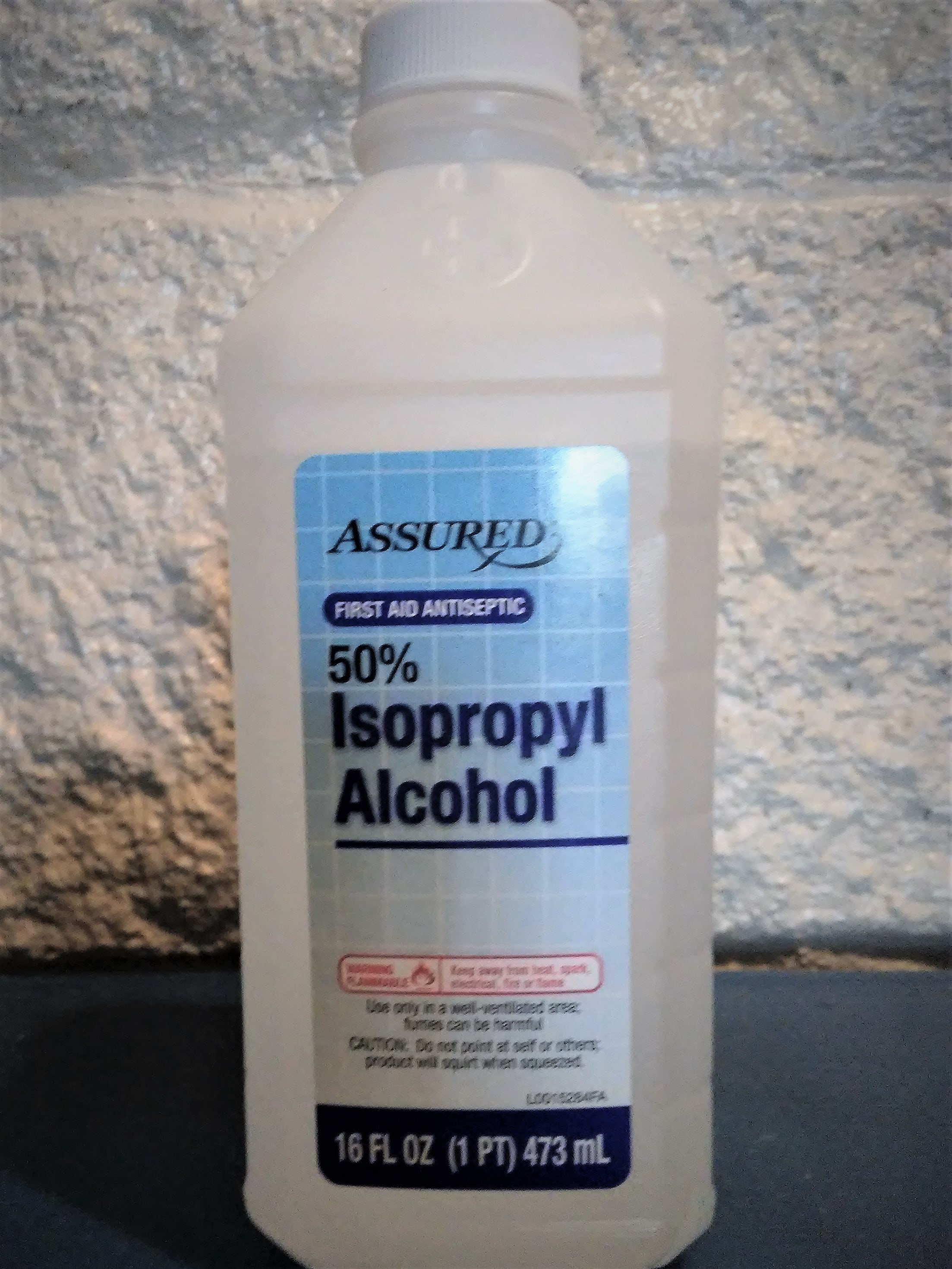Let’s face it… Not all apartments have fabulous, large, south-facing windows. There are plenty of dark corners and rooms that can still be fine for houseplants. And that’s what I’ve got for you today. A list of plants that do well with no sun… a list of the 16 best plants for dark apartments!
Some tips to help your low-light plants are to make sure that your pot has good drainage holes, such as these, and use light, well-draining soil such as this cactus potting soil! For an in-depth guide to growing plants in low-light situations, get the free guide, How to Grow Plants in the Dark!
**Note: This post contains affiliate links, which if purchased, I will receive a small commission. However, I only add products that I sincerely LOVE! If you have any issues with any of these products, please let me know!**
#1: Rubber Plant – Ficus elastica
This is one of my favorite plants, as it needs very little light (it actually gets leaf damage in direct, afternoon sunlight!) It is also on my list of hard to kill plants! It can be found either as a smaller plant, or can grow to be a large tree. No doubt about it, this is one of the easiest plants to grow indoors and in low light. For care information, check out my post on Rubber Tree Plant Care! Or you can purchase one here!
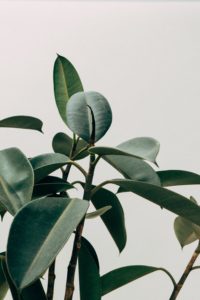
#2: Devil’s Ivy (Pothos) – Epipremnum aureum
Devil’s Ivy is one of the most common vines in the interior. This is because along with it’s low light needs, it is also very low maintenance and can grow in straight water. In soil, it prefers to stay a little moist, so it is a good choice for all you who tend to overwater your plants! It is also one of the best bathroom plants, as it does just fine with that extra bit of humidity. For care information, check out my post Pothos Vine Care! Or you can purchase one here!
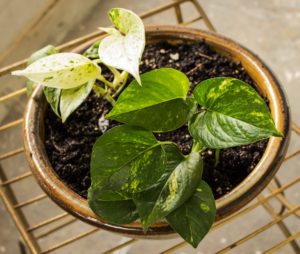
#3: Snake Plant – Sansevieria trifasciata
This is also on my list of the best and easiest plants to grow indoors. Snake plant doesn’t need very much light, is extremely low maintenance, can withstand some watering neglect, and also has very few pest problems. If you are a beginner, or just enjoy low maintenance plants, this is definitely the best plant for you to have in your dark apartment! To learn how to care for this plant, check out Snake Plant Care. Or you can purchase one here!
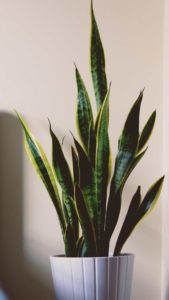
#4: Bamboo Palm – Chamaedorea seifrizii
Also known as the Parlor palm, this is a beautiful, large palm that actually doesn’t need a lot of natural sunlight. It does like for it’s soil to be kept moist, but make sure that you don’t give this plant too much water at a time, as this can cause root rot. But with light, frequent watering, this palm will look amazing in your dark space! For info on how to care for indoor palms, check out Indoor Palm Care! Or you can purchase one here!

#5: Chinese Evergreen – Aglaonema spp.
Another drought-tolerant plant, the Chinese Evergreen can deal with a bit of neglect. Extremely low maintenance, it can also withstand low humidity levels that come from being placed near a heater vent. There are also some colorful varieties that can add a splash of brightness to the darker areas of the room! Find it here!
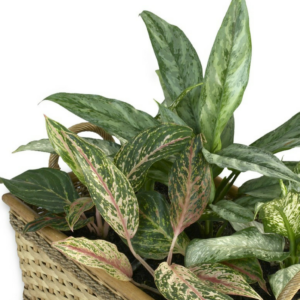
#6: Heartleaf Philodendron – Philodendron cordatum
A great vine for the indoors, the Heartleaf Philodendron also comes in a few different varieties that can add new, unique looks to your space. My personal favorite is the ‘Brazil’ variety that adds a bright, neon green stripe down the middle of each leaf! Find it here!
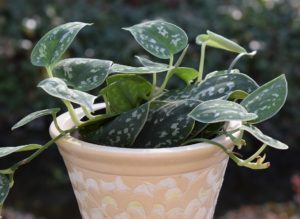
#7: Dumb Cane – Dieffenbachia
This is also a low-light and low-maintenance plant! Be careful though, as all parts of the plant are toxic and can cause difficulty breathing if swallowed. So it might not be the best choice for those with small children or pets. Also, this plant needs to dry out between watering in order to keep a healthy root system. Find it here!
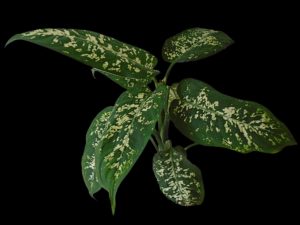
#8: Janet Craig Dracaena – Dracaena ‘Janet Craig’
Out of all the dracaena species, I’ve found that the majority of them don’t do particularly well in low light. However, the Janet Craig dracaena I have found does the best. The plant doesn’t grow much at all in low light, but as long as it is not overwatered, then the plant can actually stay alive in low light for quite some time!
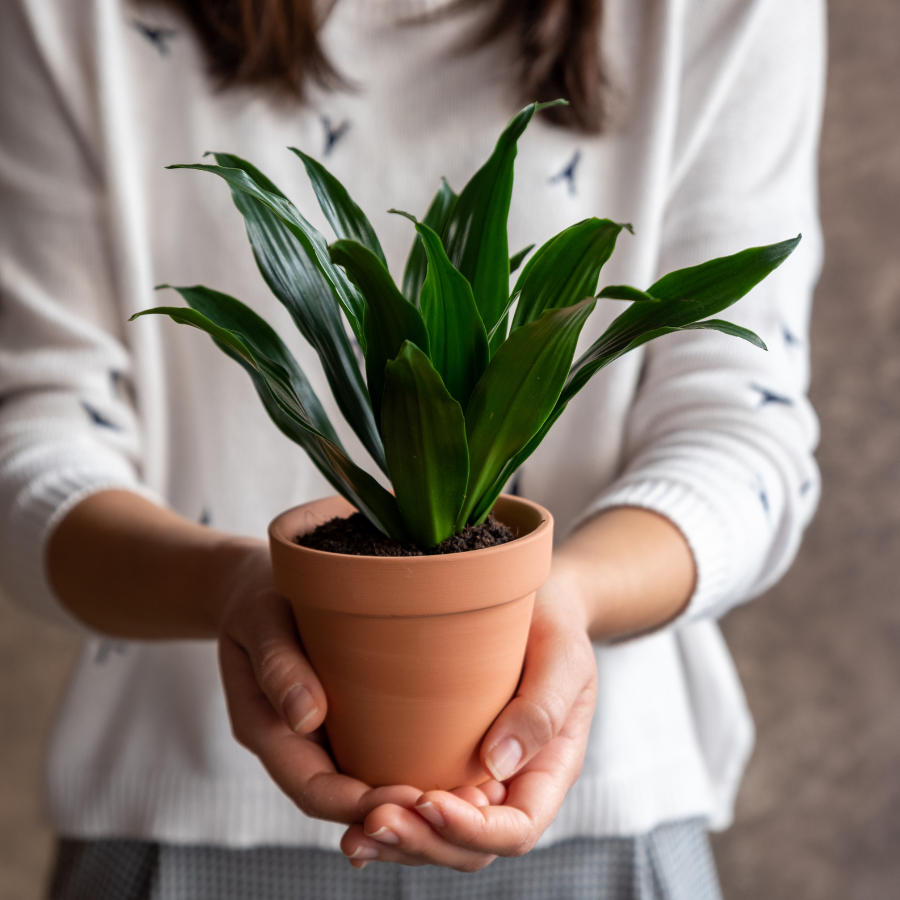
#9: Peacock Plant – Calathea makoyana
The Peacock plant is known for its distinct leaf markings, which can add a whole lot of texture and is a real show-stopper in any room. This plant can be a bit more of a challenge to grow, however, as it likes the soil to be kept consistently moist, as well as it needs higher humidity levels. A great choice for this guy would be in a low-light bathroom, where it would naturally receive higher humidity levels! Find it here!
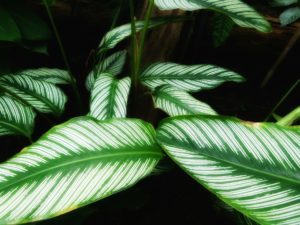
#10: Bromeliad – Bromeliaceae
Bromeliads are another great addition to low-light bathrooms! They can survive on flourescent lighting alone and like to be kept in higher humidity levels. There are also many different varieties to choose from that can add loads of color to any indoor space! A great plant for any dark apartment that is also humid! Find it here!
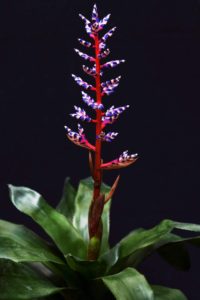
#11: Peace Lily – Spathiphyllum
Peace lily plants are not only great in low light, but are also low maintenance plants that can do well if they run a little dry. As soon as the leaves start to droop, water thoroughly, and it will perk back up again, just fine! This plant is also on NASA’s list of most effective plants to clean the air. It was found to help reduce all five of the most common toxins found indoors. Now that’s one amazing plant! Find it here!
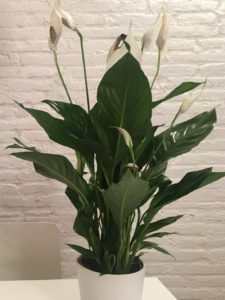
#12: Cast Iron Plant – Aspidistra elatior
This plant is not only low maintenance, but it will also stay about the same size until transplanted into a larger pot. The Cast Iron Plant will be your steady and sure plant that does well in any situation. It can also take a fair amount of physical abuse by kids, pets, etc. Just make sure that it dries out between watering. Find it here!
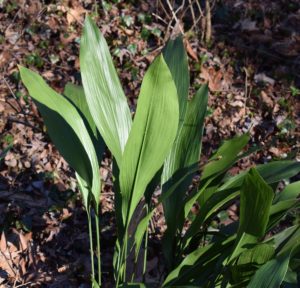
#13: Scindapsus – Scindapsus spp.
Also known Often confused with pothos species, the Scindapsus plant is a beautiful vine with silver markings. This vine does great in low light, as well as in hanging baskets and draped along tables and countertops. Just remember to water your scindapsus less during periods of low light and this vine will look gorgeous for you for years!
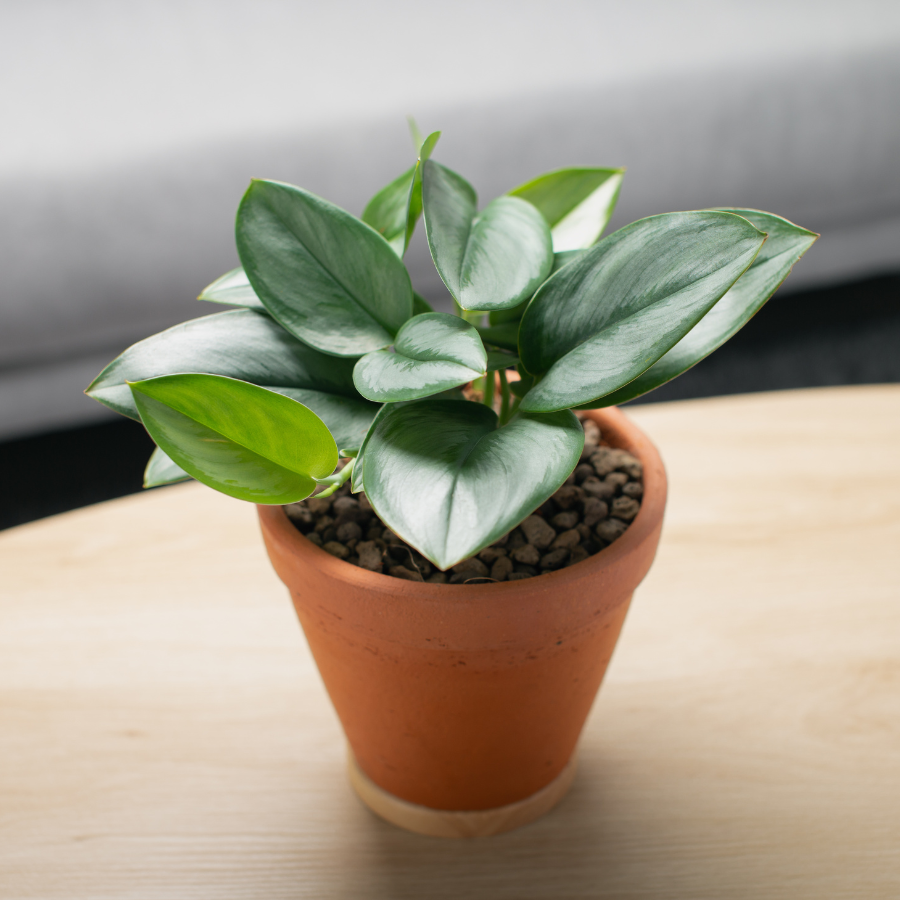
#14: Prayer Plant – Maranta leuconeura
Prayer Plant is another plant known for its bright color! It will also raise and lower its leaves to adjust to the varying light levels from night to day! Such a cool plant, the Prayer plant is perfect for any dark apartment! Find it here!
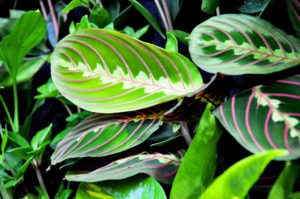
#15: ZZ Plant – Zamioculcas zamiifolia
The ZZ plant is another of my personal favorites as I love the arching lines that each branch forms. The branches can be left to get large and curve downward, or they can be pruned and trained to stay upright and straight. Like the Cast Iron Plant, the ZZ plant is also a very low maintenance plant that can take a lot of abuse from children or pets, as well as can stand neglectful watering. Just be careful, though, as all parts of this plant are poisonous. Find it here!
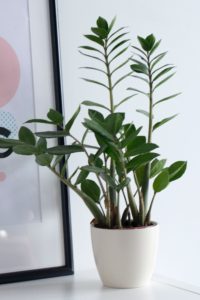
#16: Spider Plant – Chlorophytum comosum
This is a great plant for anyone who has a hard time keeping plants alive. The Spider plant needs little light, does well under low watering (or sporadic watering) conditions, and is also very low maintenance. It will also grow little plantlets (called pups) that can be repotted for even more plants! This is definitely a great choice for anyone wanting to expand (or begin) their houseplant collection. For care information, check out my post on Spider Plant Care! Or you can purchase one here!
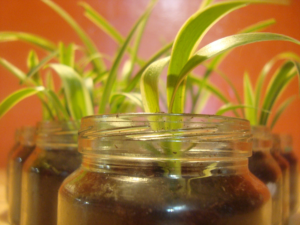
That’s my list of plants that do well in low light conditions! I know there are more out there, but I tried to stick to the ones that are easy to find in any city, as well as are easier to care for. Feel free to comment on your own experiences in growing these plants, as well as if you have any favorites!
For any more tips on how to care for houseplants in apartments, check out this post, Pot it Like it’s Hot: Best Plants for Apartments!
Happy Digging!


